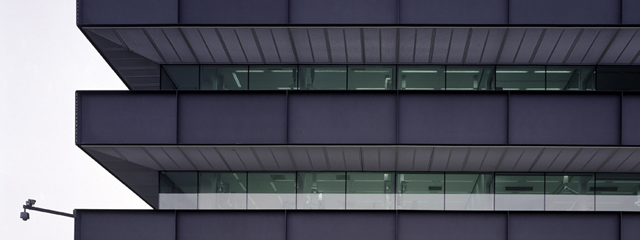Located on the edge of the Ypenburg residential district in The Hague, the NFI is a box in a sea of green. The site is large because the NFI expects to expand in the future. For the time being the building enjoys the generous proportions of its place in the landscape. The building is both a high security safeguard and – as the principal explicitly wanted – an eye-catcher. On paper, the NFI programme yields a corridor of almost 1,100 metres, with cellular offices on one side and laboratories on the other. That corridor has been spread over four floors, one of which is underground. The programme is arranged around six patios. The size and location of each individual laboratory can be adapted to suit changing demands and conditions. The empty space in the middle of the building is a metaphor for the entirely generic character of this complex. That space is an empty hall like a spine, seventy metres long, seven metres wide and seven metres high. On either side of it are groups of three patios each, around which the cellular offices are situated. The laboratories are located in the outermost circle of the building.
The building as a whole is a steel box, which has been cut open and seems to accommodate a glass volume. The steel box acts as solar shading. Because light penetration is different on each side, the steel bands around the building are not equally deep, as a result of which the glass volume seems to lie just off centre. A similar subtlety on a large scale is the fact that the walls grow increasingly thinner as you move from the inside towards the outside.
The architectural expression and spatial experience of the interior are almost entirely determined by the material and colour and their shine and tactile quality. Otherwise form and space in the interior are virtually without properties, except in the part immediately adjacent to the entrance, where an auditorium, library and conference room are stacked on top of one another. In its Donald Judd-like abstraction, the exterior is almost nothing but form. The institute thereby combines two worlds in a radical way.













